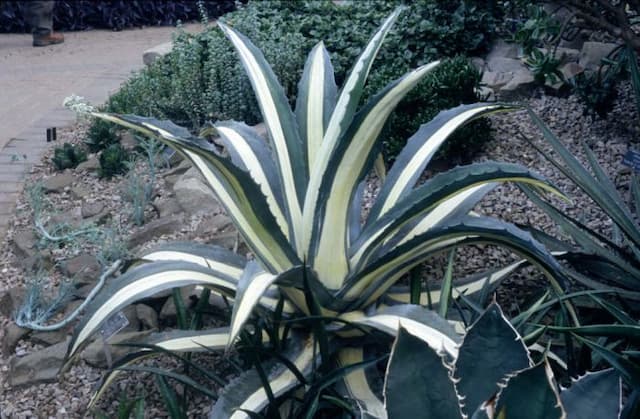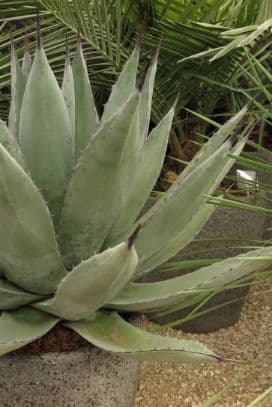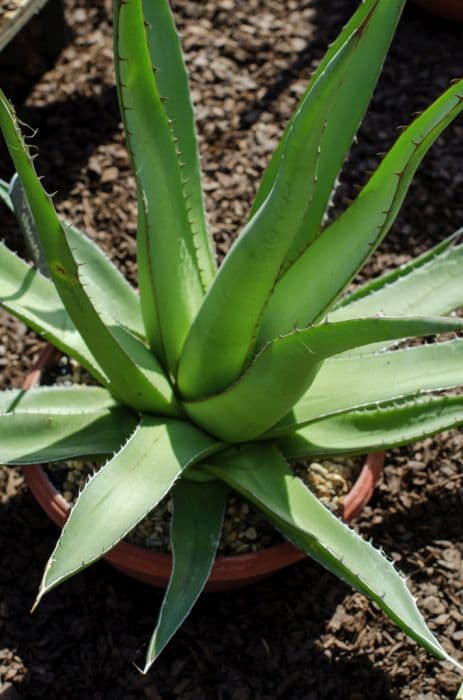Whorled Solomon's Seal Polygonatum verticillatum 'Rubrum'

ABOUT
The plant known as "Whorled Solomon's Seal" boasts a distinctive and elegant appearance. It is characterized by its arching stems, which carry leaves that are arranged in a whorled pattern, giving it a very organized and lush look. The leaves themselves are elongated, smooth-edged, and bear a rich green color that sometimes has a reddish tinge, especially around the margins. This reddish coloration is particularly highlighted in the variety 'Rubrum'. During its blooming period, small, bell-shaped flowers dangle from the leaf axils in pairs or singularly. These delicate flowers are usually white or cream-colored, with the 'Rubrum' variety often having a blush of pink. The blooms are succeeded by berries that offer a striking contrast against the foliage. Initially, the berries are green but they ripen to a deep and shiny red, providing a splash of color that draws the eye. The overall appearance of the Whorled Solomon's Seal is one of grace and symmetry, allowing it to stand out in shaded garden areas where it prefers to grow.
About this plant
 Names
NamesFamily
Asparagaceae
Synonyms
Red-Stemmed Solomon's Seal, Whorled Solomon's Seal
Common names
Convallaria verticillata, Polygonatum cirrhifolium, Polygonatum multiflorum var. robustum, Polygonatum robustum.
 Toxicity
ToxicityTo humans
Whorled Solomon's Seal (Polygonatum verticillatum 'Rubrum') is not commonly known to be toxic to humans. However, as with many plants, it is possible for sensitive individuals to experience an allergic reaction or irritation upon handling or ingesting parts of the plant. Ingesting plant parts in significant quantities may cause gastrointestinal upset or more serious symptoms in individuals with specific sensitivities. It is advisable to avoid eating any part of ornamental plants due to potential adverse effects. If ingestion occurs and symptoms appear, medical attention should be sought.
To pets
Whorled Solomon's Seal (Polygonatum verticillatum 'Rubrum') is not typically listed as toxic to pets, such as dogs and cats. However, ingestion of plant material can sometimes lead to gastrointestinal upset in animals, including vomiting, diarrhea, and drooling. As pets can have individual sensitivities, it's best to prevent them from eating this or any other ornamental plants. If you suspect that your pet has ingested part of the plant and is showing symptoms, consult your veterinarian for appropriate care.
 Characteristics
CharacteristicsLife cycle
Perennials
Foliage type
Deciduous
Color of leaves
Green
Flower color
White
Height
2-3 feet (60-90 cm)
Spread
1-2 feet (30-60 cm)
Plant type
Herb
Hardiness zones
3-9
Native area
Asia
Benefits
 General Benefits
General Benefits- Aesthetic Appeal: Adds vibrant green foliage and reddish stems that contribute to a garden's visual interest.
- Shade Tolerance: Thrives in partial to full shade, making it ideal for woodland gardens or shaded areas where many plants do not grow well.
- Wildlife Attraction: Flowers attract pollinators such as bees, while its berries can provide food for birds.
- Low Maintenance: Requires minimal care once established, making it a good choice for busy gardeners or those new to gardening.
- Drought Resistance: Once established, it can tolerate periods of dryness, reducing the need for frequent watering.
- Seasonal Interest: Offers attractive foliage throughout the growing season and has a distinct appearance in each season, including changing leaf colors and berries in the fall.
- Ground Cover: Its spreading nature can provide coverage that helps in weed suppression and soil erosion control.
 Medical Properties
Medical Properties- Anti-inflammatory: The plant has been traditionally used to reduce inflammation.
- Antioxidant: Contains compounds thought to have antioxidant effects.
- Immunomodulatory: May have effects on the immune system, possibly enhancing its function.
- Tonic: Considered a general health tonic in traditional medicine systems.
- Emollient: Sometimes used in skin care for its soothing properties.
- Antitumor: There is some historical use suggesting it may have anti-cancer properties, though modern research is lacking.
 Air-purifying Qualities
Air-purifying QualitiesThis plant is not specifically known for air purifying qualities.
 Other Uses
Other Uses- Whorled Solomon's seal, with its arching stems and attractive foliage, can be used in floral arrangements, both fresh and dried, to add an elegant woodland aesthetic.
- The plant's berries can be used as a natural dye, yielding shades of blue to black depending on the mordant used.
- In landscape design, Polygonatum verticillatum 'Rubrum' is utilized for its contrasting reddish stems, providing a striking backdrop for lighter colored plants.
- The plant can be used as a teaching tool in botanical and horticultural education to illustrate the characteristics of the Asparagaceae family.
- Whorled Solomon's seal can serve as a habitat for beneficial insects, supporting biodiversity in a garden setting.
- Photographers often use the unique structure of Polygonatum verticillatum 'Rubrum' for artistic nature photography and composition studies.
- This plant can be incorporated into wildlife gardens to provide food for birds, as they are attracted to its berries.
- It can be used in theme gardens, such as woodland or shade gardens, to create an authentic under-story layer.
- Cultivars like 'Rubrum' can be part of conservation efforts to preserve genetic diversity and protect plant species from extinction.
- The plant's growing requirements make it an ideal candidate for educating gardeners on soil moisture and shade conditions for optimal growth.
Interesting Facts
 Feng Shui
Feng ShuiThe Solomon's Seal is not used in Feng Shui practice.
 Zodiac Sign Compitability
Zodiac Sign CompitabilityThe Solomon's Seal is not used in astrology practice.
 Plant Symbolism
Plant Symbolism- Healing and Nourishment: Polygonatum verticillatum 'Rubrum', commonly known as Whorled Solomon's Seal, often symbolizes healing due to its historical use in traditional medicine for a variety of ailments.
- Protection: Some cultures believe that having Whorled Solomon's Seal in the garden or home can protect against negative energies or spirits.
- Elegance and Grace: The arching stems and delicate flowers of Whorled Solomon's Seal are seen as a symbol of elegance and grace in the plant world.
- Wisdom: The name "Solomon's Seal" is thought to be linked to King Solomon of the Bible, symbolizing wisdom and an ability to make wise judgments.
- Good fortune: In some traditions, Whorled Solomon's Seal is also associated with bringing good luck, prosperity, and fortune to the person who plants or cares for it.
 Water
WaterThe Whorled Solomon's Seal ('Rubrum') should be watered once the top inch of the soil feels dry, which typically equates to watering once every week or two, but this may vary based on climate and season. Ideally, water the plant thoroughly until water runs out of the bottom of the pot, ensuring deep root watering. During the growing season, in spring and summer, the plant may require more frequent watering, possibly needing water every few days if the weather is particularly hot or dry. It's best to provide approximately one gallon of water every week during active growth periods, adjusting as necessary for temperature and rainfall. In the cooler dormant season, watering can be reduced significantly.
 Light
LightThe Whorled Solomon's Seal prefers partial to full shade conditions, thriving best when sheltered from the harsh afternoon sun. A spot that provides dappled sunlight throughout the day or bright, indirect light is ideal for this plant. Avoid placing it in direct, strong sunlight as this can scorch its leaves and compromise its growth.
 Temperature
TemperatureThe Whorled Solomon's Seal can tolerate a wide range of temperatures but grows best when the temperature is consistently between 60 and 70 degrees Fahrenheit. It can survive minimum temperatures down to about 20 degrees Fahrenheit but should be protected from prolonged exposure to extreme cold. During very hot spells, above 80 degrees Fahrenheit, the plant should be kept cool and well-watered to prevent stress.
 Pruning
PruningThe Whorled Solomon's Seal does not require extensive pruning, but it may benefit from light pruning to remove dead or yellowed foliage and to maintain its shape. The best time for pruning this plant is in late winter or early spring, just before new growth begins. Pruning can be done annually, or as needed if the plant appears overgrown or untidy.
 Cleaning
CleaningAs needed
 Soil
SoilWhorled Solomon's Seal prefers a well-drained, fertile loam with a pH ranging from 5.5 to 7.0. To create an ideal soil mix, combine two parts garden soil, one part peat moss or leaf mold, and one part sharp sand or perlite for improved drainage.
 Repotting
RepottingWhorled Solomon's Seal should be repotted every 2-3 years, preferably in the spring, to refresh the soil and accommodate root growth.
 Humidity & Misting
Humidity & MistingWhorled Solomon's Seal thrives in moderate to high humidity levels, ideally between 40-60%, which mimics its natural forest floor habitat.
 Suitable locations
Suitable locationsIndoor
Place in bright, indirect light with moderate humidity.
Outdoor
Plant in partial shade with moist, well-draining soil.
Hardiness zone
3-8 USDA.
 Life cycle
Life cyclePolygonatum verticillatum 'Rubrum', commonly known as the Whorled Solomon's Seal, begins its life cycle as a seed, which germinates in moist, well-drained soil in partial to full shade. Upon sprouting, the seedling grows into a mature plant with distinctive reddish stems and whorled leaves, a process that may take a few years to establish a robust root system. The plant achieves vegetative maturity and produces small, tubular, and nodding flowers in the late spring to early summer, typically under forest canopies or in similar shaded environments. Following pollination, often by small insects, the flowers develop into small, dark blue to black berries by late summer. The plant goes dormant in the fall, with its above-ground foliage dying back, while the underground rhizomes persist through the winter. Each spring, the rhizomes will send up new shoots, continuing the cycle with the plant gradually spreading to form colonies.
 Propogation
PropogationPropogation time
Spring to early-summer
The most popular method of propagation for Polygonatum verticillatum 'Rubrum', commonly known as Red-stemmed Solomon's Seal, is by division. This is typically done in early spring before the plants start their active growth or in late fall when they have gone dormant. To propagate by division, carefully dig up the entire plant, making sure to get as much of the root system as possible. Gently separate the rhizomes, ensuring each division has at least one growth bud. Replant the divisions immediately, positioning them at the same depth they were growing previously, and water them thoroughly. Spacing between the plants should be about 12 inches (approximately 30 cm) to give each enough space to mature. This simple process allows for easy increase of plants and helps to maintain the vigor of older specimens by rejuvenating them.









